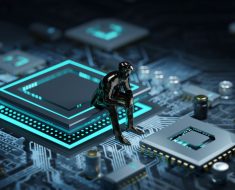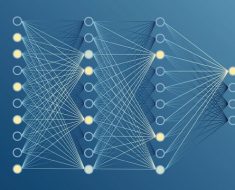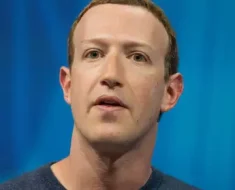Throughout 2023, Coca-Cola has embraced generative AI technology from OpenAI and Stable Diffusion in its advertising, launching several experiential marketing campaigns.
These campaigns demonstrate the transformative impact of AI on marketing, blending technology with creativity to reach audiences in new and engaging ways.
Continue reading to explore the six advertising and marketing campaigns Coca-Cola created in 2023 utilizing generative AI technology.
1. An AI Chatbot For Instagram With Local Search Results
Coca-Cola’s AI chatbot, promoted through an Instagram newsfeed ad, connects people to local restaurants in their city for the “perfect meal” via direct messaging.
Once you find the right restaurant, you can go directly to OpenTable to find out more about it or make a reservation.
The local search results offered by Coca-Cola’s AI chatbot in Instagram direct messages are likely powered by Bing, considering that:
- Coca-Cola uses OpenAI technology for some of its generative AI experiences.
- Microsoft introduced OpenTable in Bing AI chat to connect users with nearby restaurants.
- Microsoft worked with Meta to bring Bing search to Meta AI chatbots.
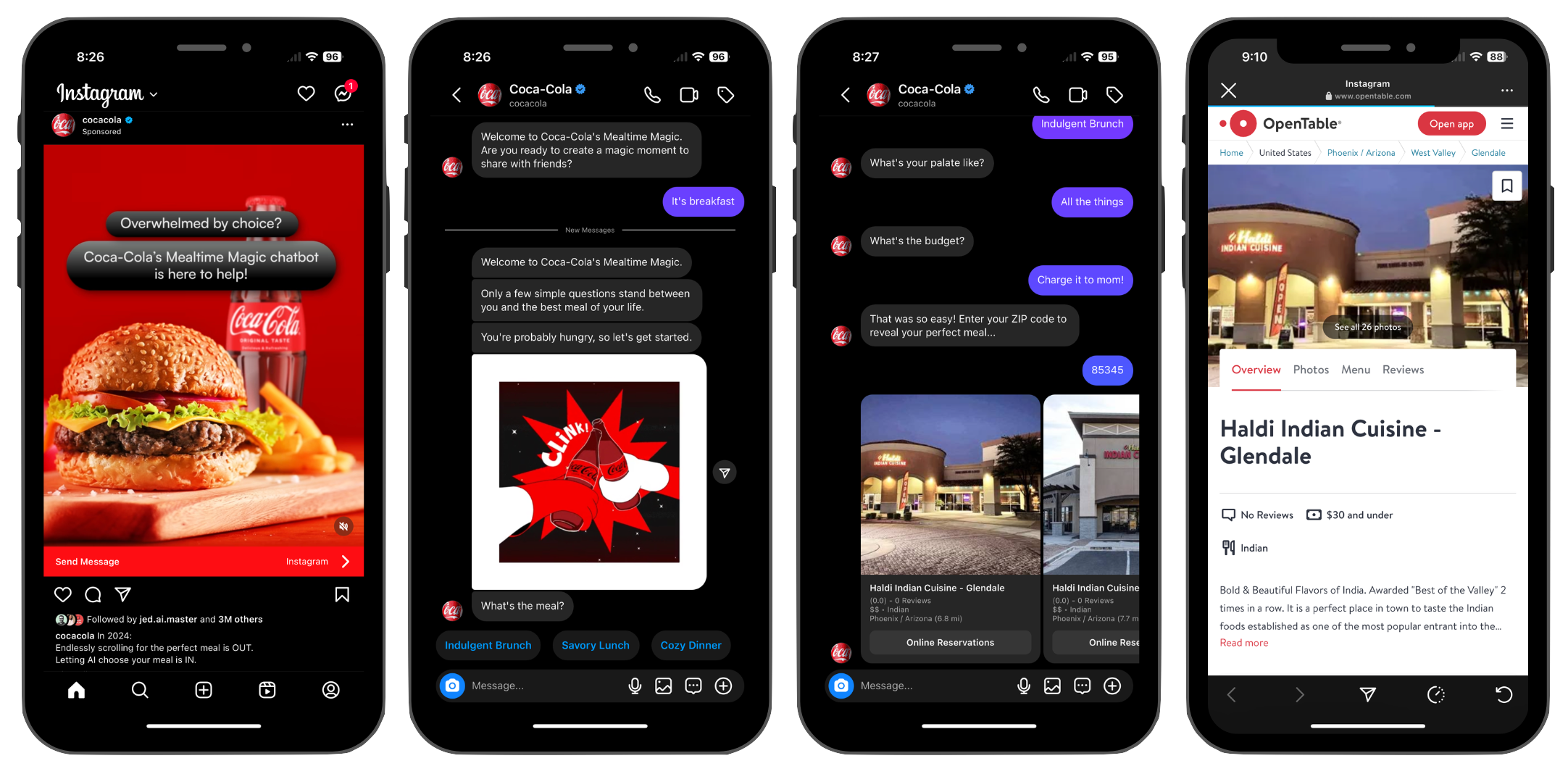 Screenshot from Instagram, December 2023
Screenshot from Instagram, December 2023
2. An AI Image Generator Using GPT-4 And DALL·E
In February, Bain & Company announced an alliance with OpenAI to offer companies like Coca-Cola advanced ways to utilize GPT-4 and DALL·E.
With this unique AI technology, Coca-Cola created the Real Magic platform, which allows users to generate original artwork using assets from Coca-Cola’s archives.
For the holidays, visitors can create AI-generated Christmas cards for family and friends.
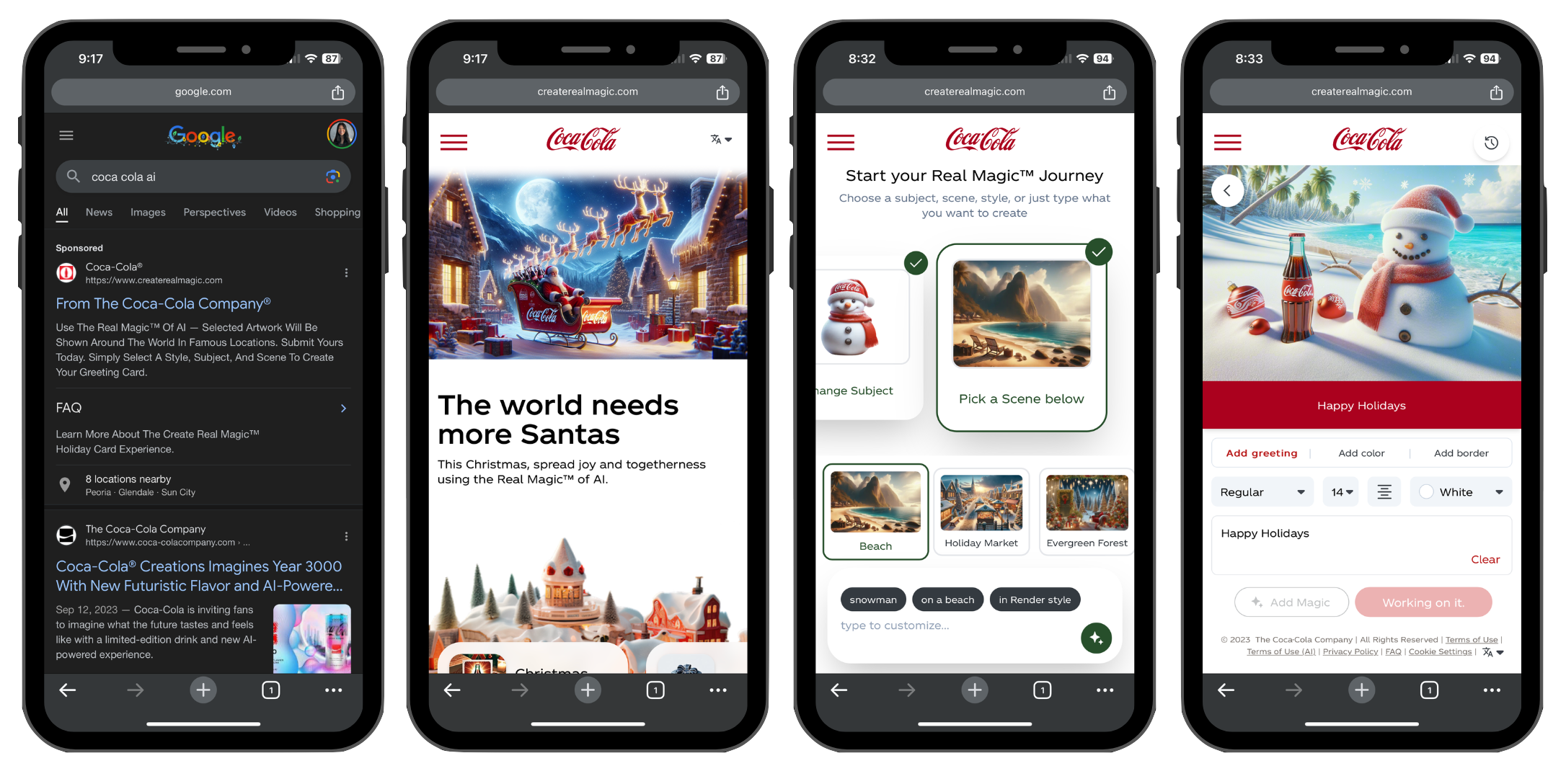 Screenshot from Google/Coca-Cola, December 2023
Screenshot from Google/Coca-Cola, December 2023
Coca-Cola promoted its holiday AI card generator using Google Ads in search. You can see an example of the ad in a mobile search above and an example of the ad in a search on a desktop browser below.
The 20 locations nearby are convenience stores and other businesses that would typically sell Coca-Cola products.
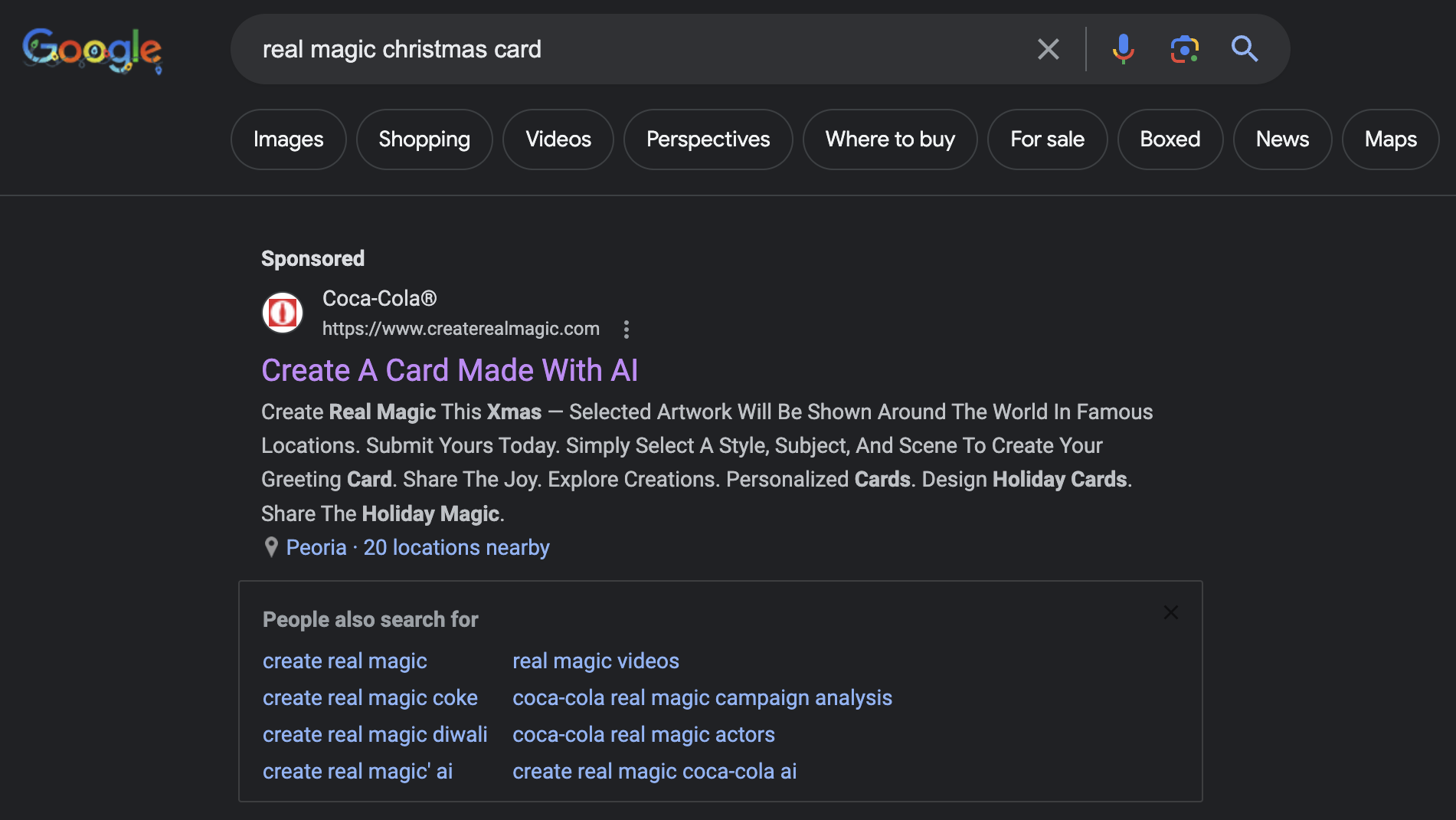 Screenshot from Google, December 2023
Screenshot from Google, December 2023
Coca-Cola also created an ad campaign on Facebook and Instagram to introduce social media audiences to the Real Magic holiday app.
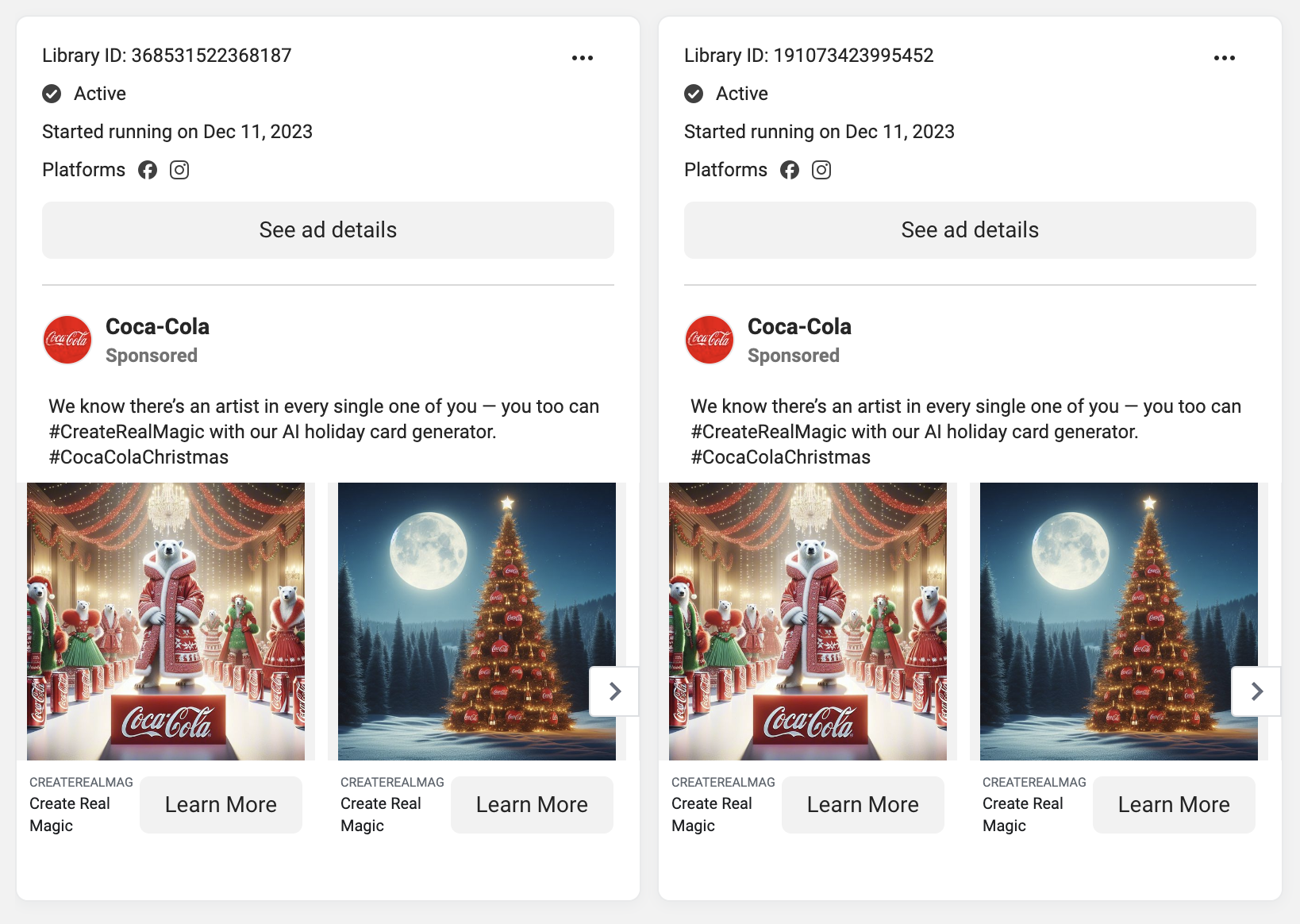 Screenshot from Facebook Ad Library, December 2023
Screenshot from Facebook Ad Library, December 2023
It’s worth mentioning that Coca-Cola offers a separate Terms of Service for AI and specifies that users must be 18 years or older to use the AI card generator. OpenAI only requires users to be 13 years old in its TOS.
3. A Contest For User-Generated Content
Earlier this year, after announcing its partnership with OpenAI, Coca-Cola invited creators to participate in the Create Real Magic contest to generate original artwork with branded Coca-Cola assets, GPT-4, and DALL·E.
Artists in select countries could submit their creations for a chance to be featured on Coca-Cola’s digital billboards in New York’s Times Square and London’s Piccadilly Circus.
The campaign demonstrated how a brand can inspire fans with minimal graphic design to create user-generated content (UGC). It also allowed Coca-Cola to refine the AI experience before the launch of the holiday card generator.
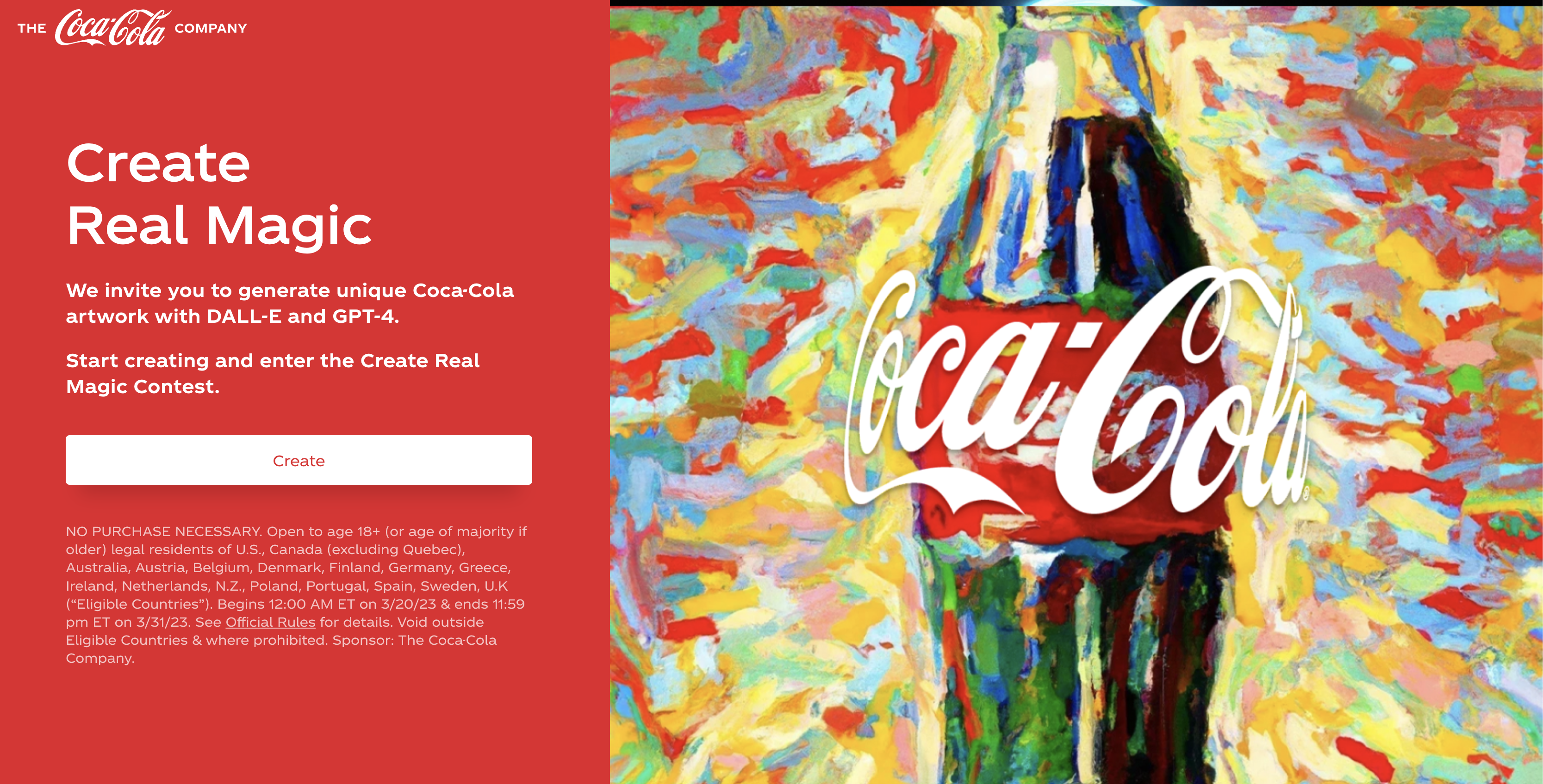 Screenshot from Coca-Cola, December 2023
Screenshot from Coca-Cola, December 2023
Coca-Cola brands like Topo Chico share AI-generated images on social media, noting that AI has dramatically increased the volume of artwork created by fans.
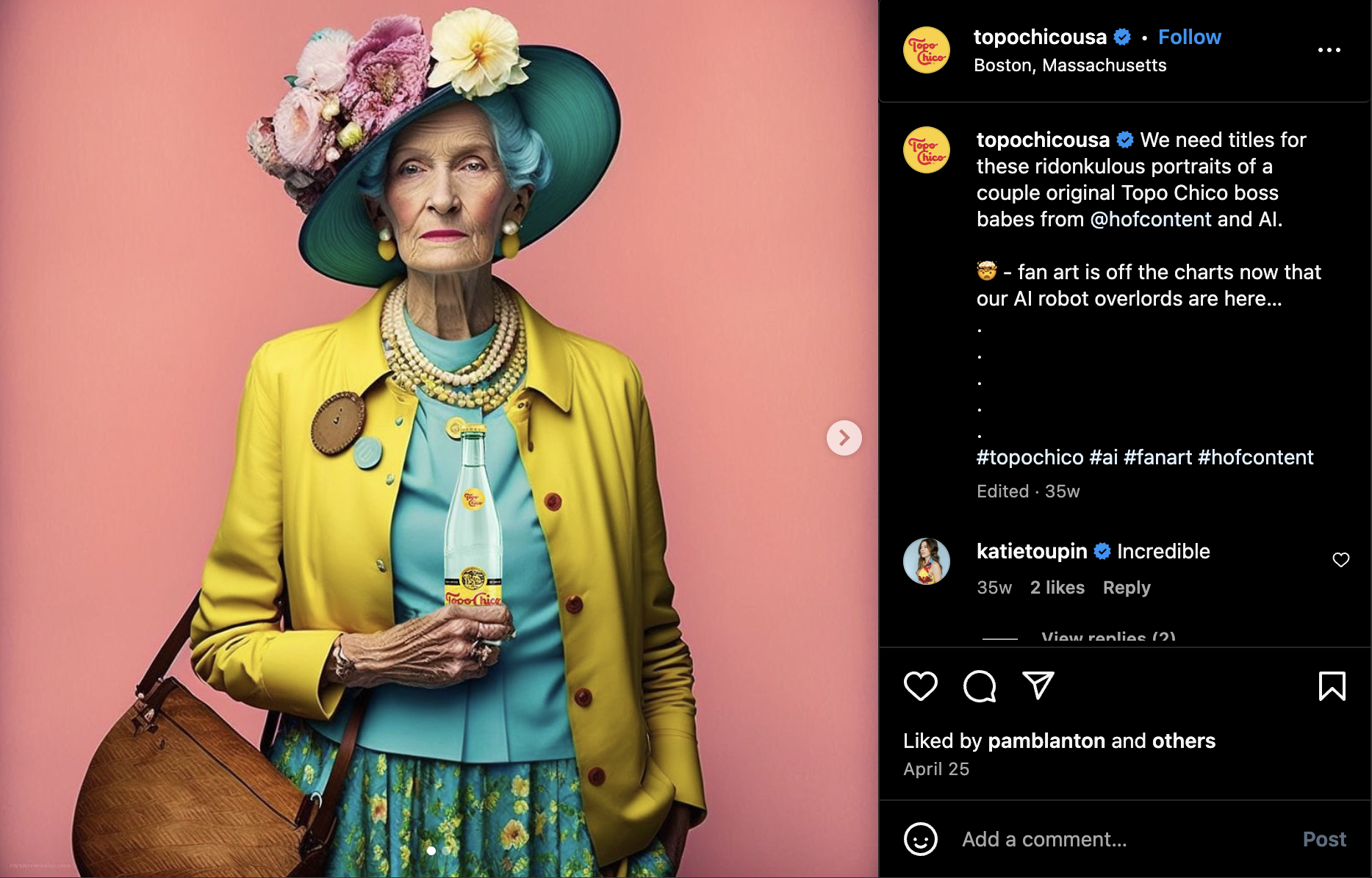 Screenshot from Instagram, December 2023
Screenshot from Instagram, December 2023
4. Video Marketing Featuring Reimagined Art
Coca-Cola continued promoting Real Magic in Masterpiece, a video featuring reimagined art throughout the years.
The AI-generated art featuring Coca-Cola branded assets is also available as collectible digital assets.
ᴏɴᴄʜᴀɪɴ 🟡 ꜱᴜᴍᴍᴇʀ@CocaCola is bringing their Global Masterpiece campaign onchain with iconic works from leading artists.
Mint now: https://t.co/xTWyI3O7IW pic.twitter.com/9wxFgt8qOh
— Coinbase 🛡️📞 (@coinbase) August 13, 2023
5. An Out-Of-Home Advertising Experience
Coca-Cola Creations concluded another year of limited-edition releases with a weeklong OOH advertising experience called “Destination Y3000” in Las Vegas.
The takeover of The Sphere highlighted Coca-Cola’s new Y3000 flavor, the first to be co-created by humans and AI. Coca-Cola’s Selman Careaga shared insight into the process in an interview.
“The intent was to use AI and HI to understand how people think of the future: the emotions, the color, the flavors, the taste. We used those insights and then we worked with our R&D team and they came up with a formula for Y3000.”
The experience featured dynamic projections, showcasing futuristic cityscapes and a world imagined by generative AI on The Sphere’s Exosphere.
If you are curious how much an OOH experience costs at The Sphere, the rates were allegedly leaked earlier this year:
Advertising rates for the $2.3 billion MSG Sphere have been leaked.
• $450,000 for the day
• $650,000 for the weekThose prices include working with MSG’s 300+ designers on the creative & they estimate 4.7 million daily impressions (300k in person & 4.4M on social).
Crazy. pic.twitter.com/mNRyyS4OYK
— Joe Pompliano (@JoePompliano) October 2, 2023
Google Supports Use Of Machine Learning For Creative Content
The Sphere recently featured the work of internationally acclaimed media artist Refik Anadol, who harnessed the power of AI to create “Machine Hallucinations: The Sphere.”
Dear friends, I am deeply honored to be a part of the opening of The Sphere as the first artist in residence with legends U2 and Darren Aronofsky! I can’t wait to share more of many experiments on The Sphere. pic.twitter.com/sASp5VZjcM
— Refik Anadol (@refikanadol) October 2, 2023
Since his 2016 Google AMI Residency, Anadol has transformed vast datasets of space, nature, and urban areas into dynamic visualizations, revealing hidden aspects of reality through generative AI algorithms, including DCGAN, PGAN, and StyleGAN.
Google’s Artists + Machine Intelligence (AMI) program is an initiative focused on nurturing a community of creative professionals and researchers working with machine learning.
6. An Augmented Reality Experience With Stable Diffusion
In addition to the OOH advertising experience in Las Vegas, Coca-Cola leveraged experiential product marketing by creating an augmented reality (AR) experience for Y3000 using Stable Diffusion.
The experience transports any setting you photograph into “the future” imagined by generative AI.
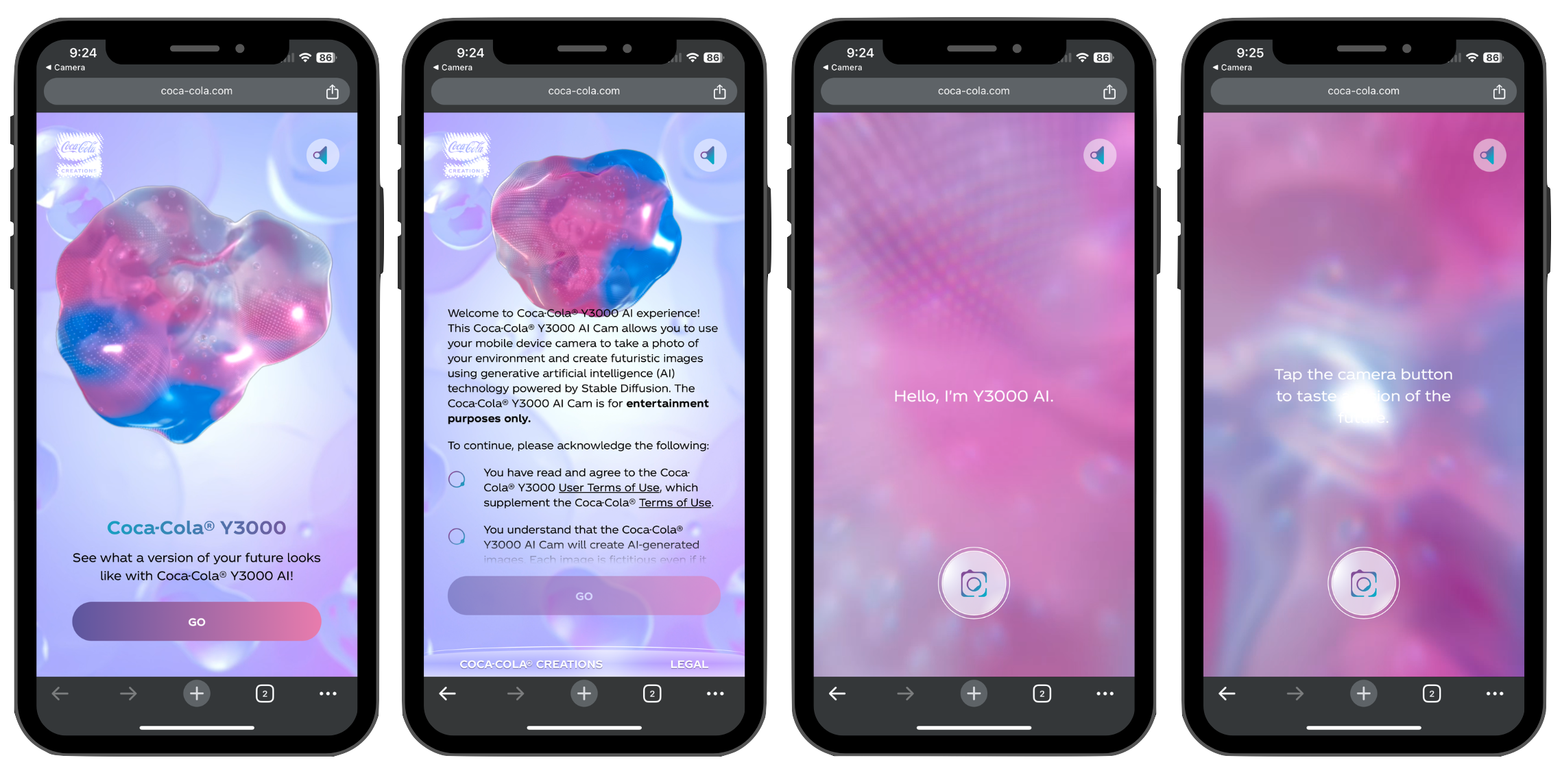 Screenshot from Coca-Cola, December 2023
Screenshot from Coca-Cola, December 2023
It is available for smartphone users only, offering a QR code for visitors on a desktop browser.
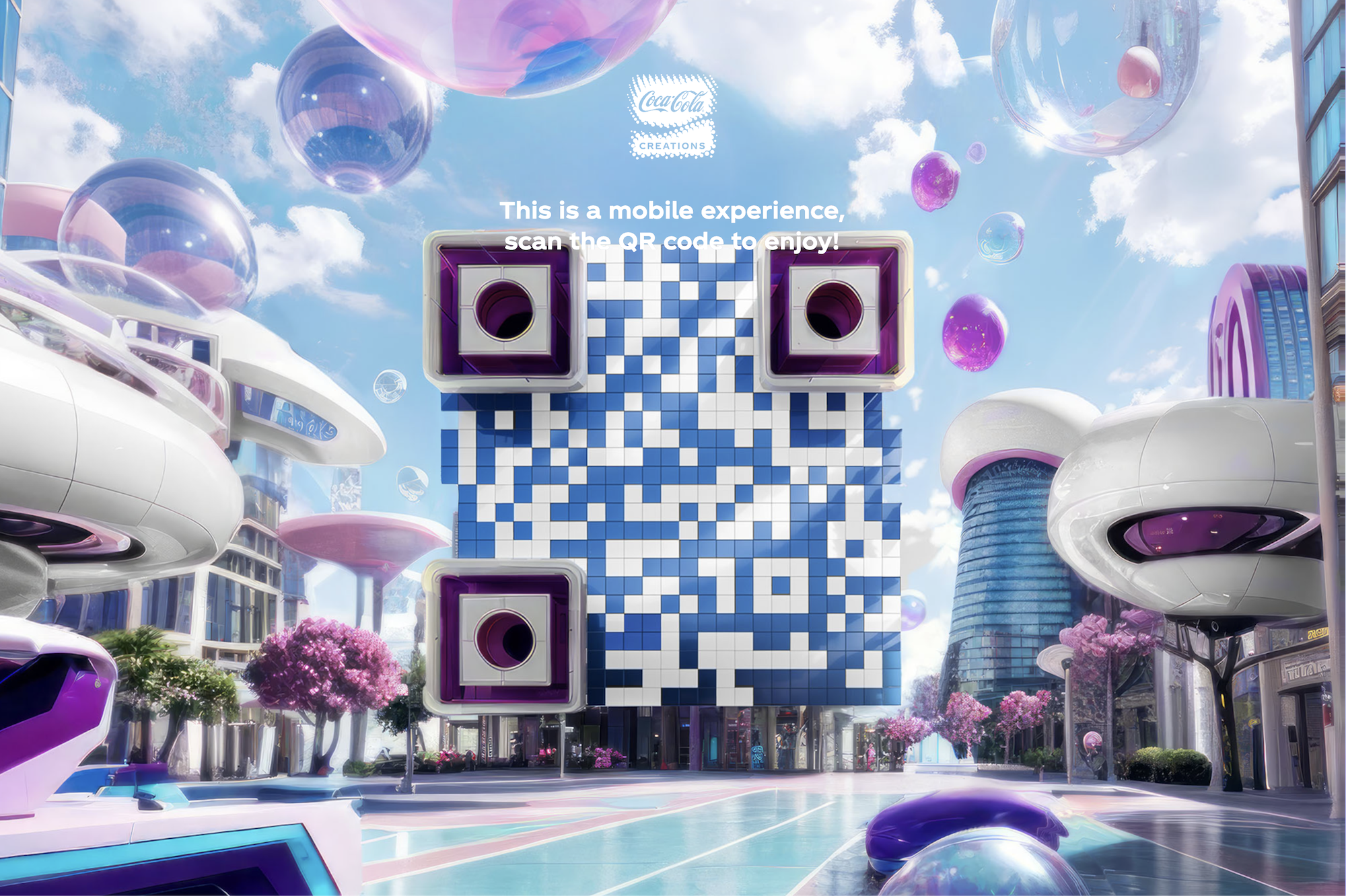 Screenshot from Coca-Cola, December 2023
Screenshot from Coca-Cola, December 2023
The QR code was labeled as “likely” created by AI according to an AI image detector that attempts to identify images created with DALL·E, Stable Diffusion, and other popular AI image generators.
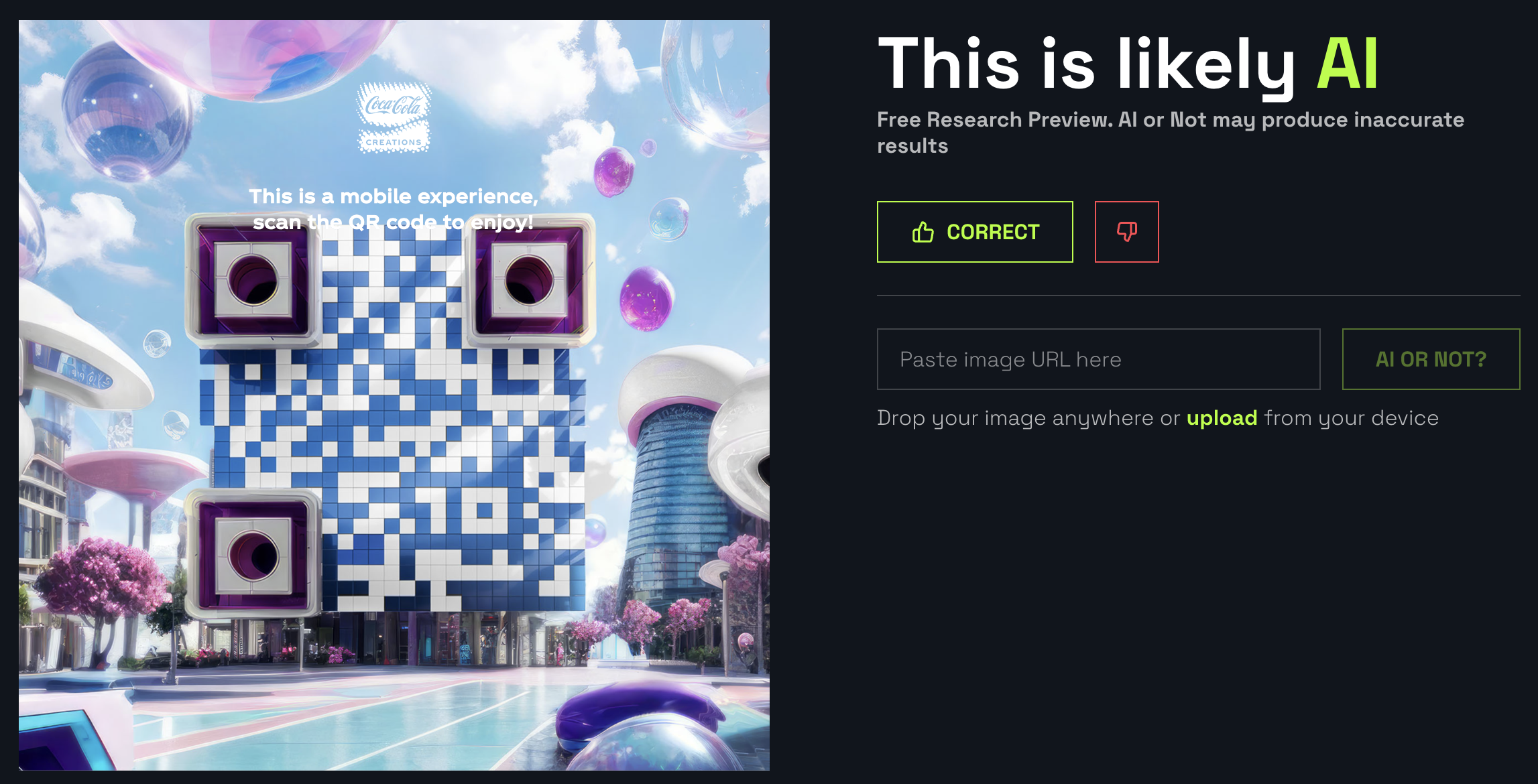 Screenshot from AI or Not, December 2023
Screenshot from AI or Not, December 2023
Conclusion
Throughout 2023, Coca-Cola’s strategic adoption of generative AI technologies from OpenAI and Stable Diffusion marked a significant shift in its advertising and marketing approaches.
From interactive AI chatbots and user-generated content contests to immersive augmented reality experiences and innovative OOH advertising, these initiatives showcased Coca-Cola’s commitment to blending cutting-edge technology with creative marketing to engage audiences in novel and dynamic ways.
It also gives marketers and advertisers inspiration for future use cases of generative AI in brand marketing.
Featured image: Luciano Mortula – LGM/Shutterstock


